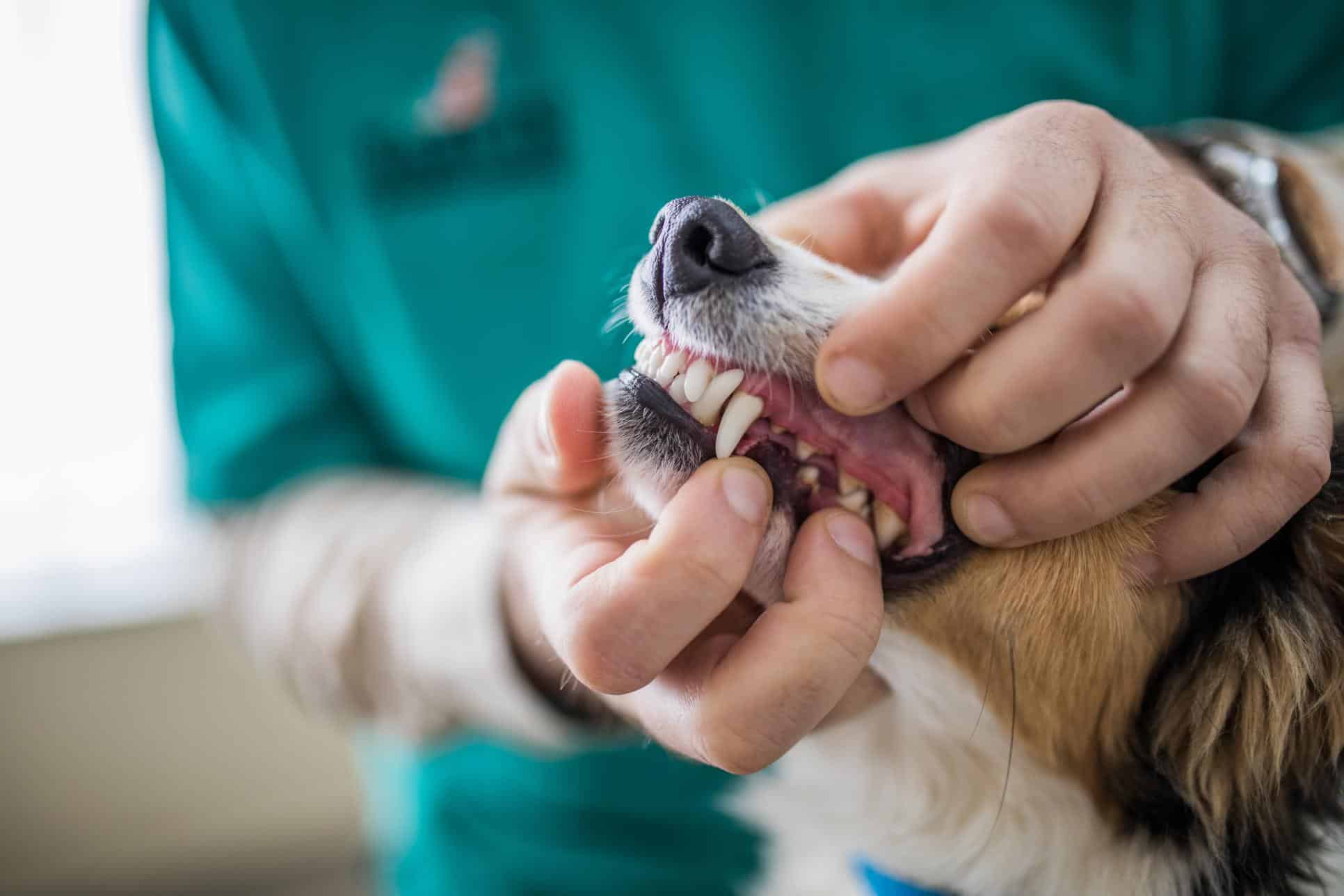Recognizing Signs of Pet Dental Problems

Pet dental problems are not only prevalent among pets over age 3, but they can impact quality of life and longevity. The ability to recognize dental problems can boost prevention strategies and keep a pet healthy and happy for many years.
The Plan
Ideally, pets visit the vet every 6-12 months. The ability to stay in front of potential problems not only promotes overall well-being, but can also lead to early detection of various disorders. Chief among them is periodontal disease. Responsible for bad breath, painful, inflamed gums, and lost/broken/loose teeth, periodontal disease can also impact the health of the body’s major organs. Oral bacteria can seep into the bloodstream and travel to the heart, liver, and kidney, which could cause serious disease.
Charting a Course
At every routine wellness exam we check the teeth and gums for any signs of plaque or tartar buildup (typically visible as yellow-brown discolorations on the back molars). Since the range of periodontal disease extends below the gum line, we recommend digital X-rays at the same time as a cleaning and examination under general anesthesia.
Removing tartar and plaque from the teeth can promote optimal dental hygiene. However, if there is extensive damage to the root systems, or resorptive lesions are present, it might need to be removed surgically.
Brushing at Home
In addition to regular professional cleanings, pets benefit from regular brushing at home. This can take some time to figure out. A great goal would be to brush a pet’s teeth once a day, but once a week is a great start toward removing plaque from the mouth.
Dental chews, prescription diets, and water additives round out the list of products designed to promote pet oral health at home.
When It’s Time to Act
Oral pain can be quite debilitating for pets, but they try very hard to hide any signs of sensitivity, tenderness, or discomfort. This can lead to unnecessary suffering, as pet owners may not pick up on the subtle signs of pain.
The following signs of pet dental problems require immediate attention:
- Bleeding or swollen gums
- Bad breath
- Fractured teeth
- Missing teeth
- Food avoidance
- Favoring one side while chewing
- Dropping food
- Weight loss
- Hiding or social withdrawal
- Drooling (with or without blood)
- Ropey salivation
- Pawing at the mouth
If you have questions or concerns about what’s happening inside your pet’s mouth, we welcome your call at (804) 432-2534. Our veterinarians and staff members are always here to help you at Capital Home Veterinary Care.
